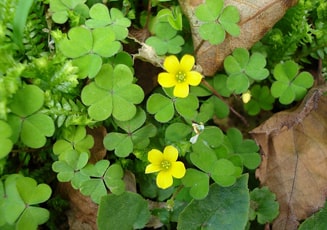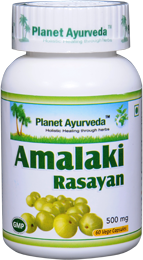Changeri (Oxalis corniculata) – Changeri Properties, Uses, Benefits & Dosage

Description of Changeri Plant
Changeri Plant Latin name Oxalis corniculata is a herbaceous and perennial herb with primary slender roots. Changeri is low growing creeping weed often found in gardens, waste lands, and hedges and roadsides. Branches of Changeri plant lie on the ground and start rooting to form new plant. This plant grows up to height of 30cm with erect and creeping branches; stem is narrow and creeping, about 40cm in length. Roots of this Oxalis corniculata plant are branched and fibrous covered with small hairs. It contains three heart shaped leaflets that are joined to a long petiole. Leaves are about 4-12mm long and 10-20mm broad. Yellow flowers of the plant grow in cluster of 1-6 petals that are about 10-20mm long. Fruits are 1-2cm long and are cylindrical capsules. Seeds are rough, egg shaped, flattened and dark red in color. Flowering season of this plant is from July to December.
General Information of Changeri
Indian penny wood, creeping wood sorrel, creeping oxalis, sleeping beauty and procumbent yellow sorrel all are common names of oxalis corniculata. It is very effective herb used for treating stomach and liver problems in ayurvedic medicine system. Leaves of this plant are edible, with tangy taste just like taste of lemons. This herb is richest source of vitamin –C, B, potassium and oxalic acid. Flowers are sour in taste and rich in oxalic acid and potassium oxalate. Leaves of this plant are extremely astringent and bitter in taste. It has self-pollinating flowers that have capacity to grow fast in open grasslands. In Canada this plant is used as weed for glasshouses.
Red to brown, yellow and orange dyes are obtained from this plant. This plant is edible and it is used as salad. This plant is anti-scorbutic and used in the treatment of scurvy. This herb is anti-inflammatory, anthelminthic, diuretic, febrifuge, relaxant, stomachic, astringent, analgesic and styptic in nature.
Major chemical compound present in this herb is oxalic acid and vitamin-C. This herb is also rich in water, fat, proteins, calcium, phosphorous, iron, niacin and beta carotene. Other chemical compounds available in this herb are flavonoids, phytosterols, phenol, tannins, fatty acids and volatile oils. Leaves are rich in flavonoids, isovitexine, and vitexine. It contains various essential fatty acids like linoleic acid, oleic acid, palmitic acid and stearic acid. Stem is rich in tartaric, malic acid and citric acid.
Habitat
Oxalis is mainly native to Hawaii and south Europe. It is found in tropical regions of America. In Asia it is found in India, Pakistan, Afghanistan, china, Indonesia, Taiwan and japan. In India it is mostly found in open gardens, grasslands, riversides, mountains, wastelands and roadsides.
Classification
- Kingdom – Plantae
- Order – Oxalidales
- Family – Oxalidaceae
Other Names of Changeri
- English name – Yellow wood sorrel, Creeping wood sorrel, Creeping oxalis, creeping lady’s sorrel, Procumbent yellow sorrel
- Hindi name – Amrul, Changeri
- Bengali name – Amrul
- Guajarati name – Ambolee, Changeri
- Kannada name – Pullamouradi, Sivargee
- Malayalam – Pulliparel
- Marathi name – Ambutee, Ambatee
- Tamil name – Paliakiri
- Telugu name – Pulichinta
- Urdu name – Teen patiya, Changeri
- Arabic name – Hhamdid
- French name – Alleluia, Oxalis cornicluee
- German name – Gelber saurerklee, Gehornter sauerklee
- Italian name – Ossalide corniculata
- Nepalese name – Caremalaa
- Portuguese name- Azedinha, Erva-azedo
- Spanish name – Acederilla, Vinagrera
- Turkish name – Eksi yonca
- Brazil name – Trevo-azedo
- Chinese name – Cu-jiang-cao
- Fiji name – Matakonikoni
- Philippines name – Salamagi, Kanapa
- Sweden name – Krpoxalis
Ayurvedic Properties of Changeri
| Hindi / Sanskrit | English | ||
| Rasa | Amla, Kashaya | Taste | Sour, Astringent |
| Guna | Laghu, Rooksha | Physical Property | Light, Dry |
| Virya | Ushna | Potency | Hot |
| Vipaka | Amla | Metabolic Property (After Digestion) | Sour |
Changeri Effects on Doshas
It balances vata and Kapha doshas.
| Charak Samhita | Sushrut Samhita and Vagbhata |
|
Shaak varga |
Shaak varga |
Ancient verse about oxalis corniculata

The Bhavprakash nighantu Twenty Eighth edition of 2010, verse 23-24, page no-658
It states that Changeri, chukrika, dantshatha, ambashtha, amallonika, ashmantak, shafri, kushali and amalpatrak all are synonyms of oxalis corniculata. This herb is sour in taste, stimulant, appetizer, rough, aggravates pitta dosha due to its hot potency. It is used to cure kapha and vata dosha, abdominal tumors, piles, leprosy, diarrhea and dysentery.
References:-
The Bhavprakash nighantu with elaborated Hindi commentary by Padmashri prof. K. C. Chunekar, edited by Late Dr. G. S. Pandey: Twenty Eighth edition of 2010: shaak varga; verse 23-24, page no-658.
Practical uses from Oxalis corniculata
- Oxalis is best herb rich in vitamin-C and it is best used in the treatment of scurvy.
- This herb is very beneficial for treating influenza.
- External paste of leaves is used as antidote for the poisoning caused by snake bites, datura, mercury and arsenic.
- Leaf extract or juice is used for treating burns, insect bites and various skin eruptions. It is also beneficial for various skin disorders like warts, corns, inflammation and boils. Leaf juice is mixed with onion extract to remove warts.
- Decoction of this herb is used for gargles.
- Infusion of leaves is used to cure irritation of eyes and opacity of cornea.
- This herb is anthelminthic in nature and it is used in infants to get rid of hookworms and it is also used to cure enteritis.
- Leaf juice of this herb is used in the treatment of jaundice and it is very effective to cure symptom of diabetes i.e. poly-hydra.
- Infusion of leaves of this herb is used for treating low grade and high grade fevers.
- Leaf paste is applied over forehead externally to relieve headaches. Crushed leaves are used to reduce inflammation.
- Leaf extract mixed with oil and its local massage is used in relieving insomnia.
- Aqueous extract of this herb is cardio-protective in nature and it is very beneficial for overall health.
- It is used in the pacification of vata and kapha dosha.
Part used
- Changeri Leaves
- Changeri Flowers
Dosage
- Decoction – 15-30ml
Cautions
- Oxalic acid present in leaves gives sharp flavor and this oxalic acid helps to bind up the proper supply of calcium. So sufferers of gout, rheumatism and hyperacidity should restrict intake of this herb.
Ayurvedic Products from Oxalis Corniculata
Amalaki Rasayana
Amalaki rasayan is used as substitute for oxalis corniculata. Amalaki rasayan available at planet Ayurveda is richest source of vitamin-C. It is natural supplement used to fight against body infections. It is rich in anti-oxidants and has ability to fight against free radicals.





1 thought on “Changeri / Oxalis corniculata”